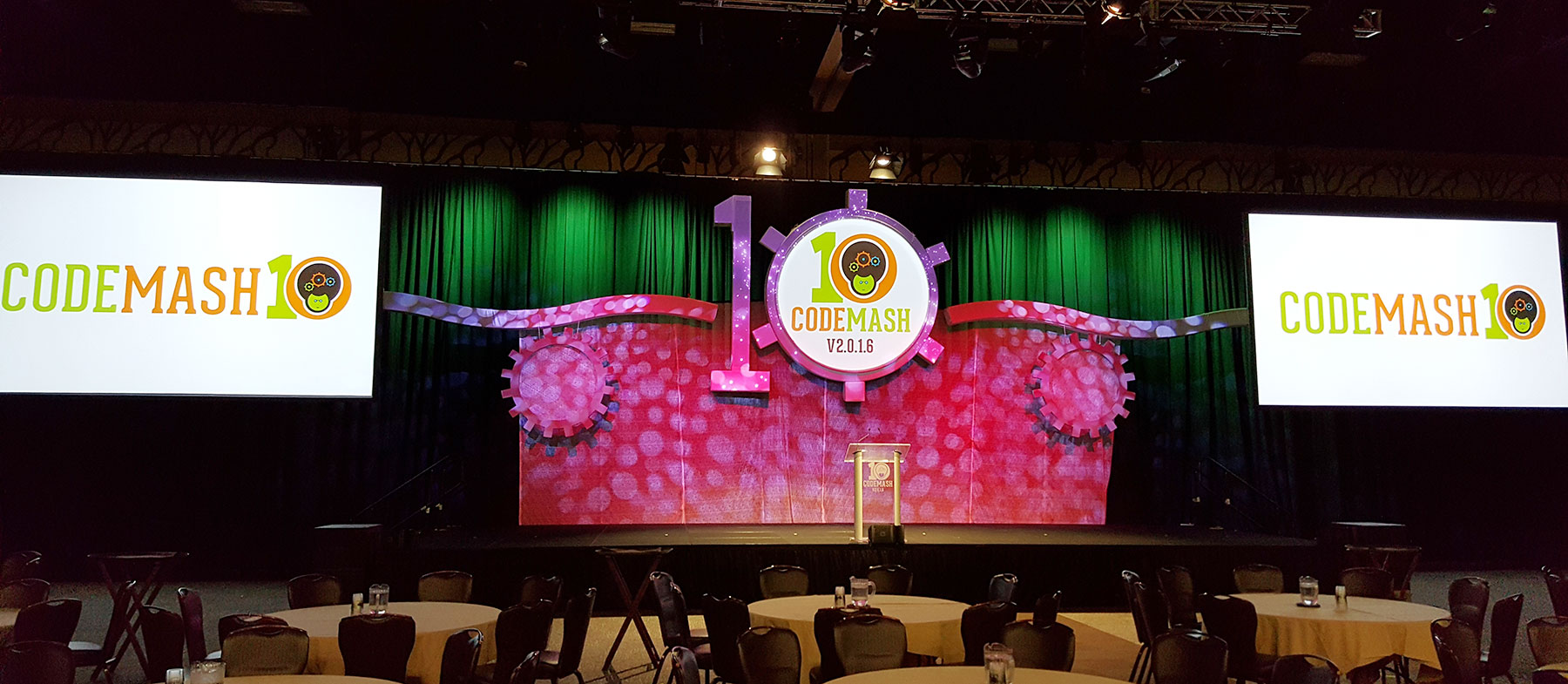I will admit that I had some trepidation about registering for this year’s Codemash conference. I wasn’t worried about the conference overall, which is always wonderfully organized, presented, and planned but rather the content of the presentations themselves.
I’m a designer; user-focused design is what I do daily (and occasionally nightly) for clients at Coffee and Code. Codemash, as you can guess from the name, is a developer focused conference. Last year there were a good number of talks geared towards designers and front end developers; I learned about animation, illustration, and style guides. I was even fortunate enough to give one myself on a modern design process. This year though the talk abstracts seemed to fall more squarely in the coding realm and anything related to design and UX was more of an introduction for developers.
My teammates convinced me to sign up; they made the important point that any concerns over the content wouldn’t matter when you consider the value of such a large conference that’s so close to us and so accessible. We want to support Codemash and the community, and worse case scenario… I could hang out by the waterslides drinking Kalahari Sunrises!
As I looked over the schedule and planned out my days, I took the opportunity to see some truly wonderful talks; most of which had nothing to do directly with design.
Some highlights were:
How Do We Solve for XX?
There was an excitement in the room before this talk like none of the others I went to. The (wonderfully diverse) crowd seemed very eager to get started as the lack of women in the web/technology field, with the alienation and attrition of those that are our coworkers, is a huge problem for our industry.
Kate Catlin (@Kate_catlin) was a wonderful speaker, really more of a leader for this interactive session. Her energy and boldness helped take this beyond a typical “we need more women” discussion and toward “what can all of us actually do?”
She began by discussing her background, and some shocking numbers regarding female tech workers.
The amazing moments came as we were split into groups; each trying to tackle one step of the pipeline problem, from young girls being discouraged from STEM interests to existing women feeling isolated and excluded in their careers and workplaces. We brainstormed ideas and everyone shared their experiences. Women, men, native English speakers and not, those from traditional tech backgrounds, and those who switched careers later in life.
It was eye opening to listen to all the experiences and be exposed to some of the privileges that are so easy to be unaware of. The great thing though was that it wasn’t a complaint-fest, there was a hopeful tone throughout and some great ideas to try and actually implement in our own communities.
This session was hugely beneficial to me in the form of empathy. As a designer there are few things more important than that.
A Web for Everyone
I’ve often approached accessibility in web projects the way I think many others have; follow basic best practices… and hope for the best beyond that.
Dylan Barrell (@dylanbarrell) led this discussion, sharing what he had learned leading accessibility studies and audits over the past few years.
What was brilliant about this presentation was a blindfolded walkthrough of some sites using screen readers. Far more powerful than reading a spec and following guidelines, it was eye-opening to experience how visually impaired users consume the things we build.
The other “wow” moment in this talk came from a first hand demonstration of the way a visually impaired – but not blind user used the web. She doesn’t use a screen reader, but instead relies heavily on magnification tools and context hints like color and contrast. It’s incredibly easy for us to assume accessibility == screen readers, ignoring users who have different levels of vision and possibly additional challenges, perhaps auditory, cognitive, or physical dexterity. Building in an accessible way is a complex challenge, but also incredibly important and one I hope we can make more of a priority moving forward as an industry.
Finally, a Voice for the Enterprise!
“Hey Alexa, tell me how our servers are doing.”
Voice command interfaces like Siri, Google Now, Cortana, and Amazon’s Echo are growing every day. It’s entirely conceivable that soon “interfaces” will be far less visual than I’m used to building, and voice and other tactile inputs will be how we work with them.
William Klos (@williamklos) led this session, which was as much real demo as it was discussion. He contrasted the different systems available today, and talked about the roadmap for new developments.
This presentation showed what we can do right now; customizing the Amazon Echo to run custom code, complete tasks and interact with users. There are a number of pitfalls and shortcomings, but it’s clear that leveraging technology like this is only going to be more widespread. How you work with the APIs, and how you structure your voice interactions was really illuminating – it’s interface design, but much different than what I’m used to doing.
Conclusion
The overarching theme to all of this was that I learned the benefit of thinking in a different way and becoming a more well rounded learner. I could have easily gone to a different conference and learned about Atomic Design, or new prototyping tools, or new type systems but instead I pushed myself in interesting ways and came away a better designer and human. Couple that with good times with friends, board games, and an indoor waterpark and I couldn’t have asked for a better Codemash.


